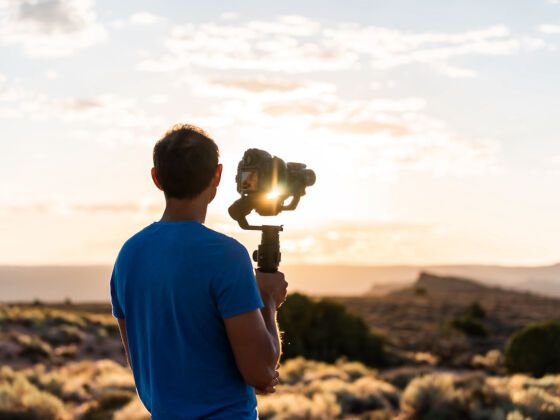DIGITAL SLRs are popular items these days, especially among traveler photographers. This article will explore the fundamental differences between a DSLR and a compact digicam, plus the facts on what a DSLR can and can’t do. We’ll end with a quiz to test if you’d be better off with a lighter pack and a point & shoot.


Advantages of an SLR
- You can see the image just as it will appear (through the lens).
- You can change the lens.
Number one is no longer exclusive to SLRs. Every digicam on the market today has a large LCD that lets you see “live” what you will take. In many ways they are more advanced than DSLRs (e.g., allowing you to actually see the change in brightness or white balance before you ever take the photo).
So now we are left with changing lenses as the only fundamental difference. If you got a DSLR, would you buy — and carry — multiple lenses?
The major things a DSLR can do for you
- Wide angle. Some compact cameras go as wide as 28mm, but that’s just the starting point for wide angle on a DSLR. I shoot over 50% of my photos between 15-28mm (extra lens needed).
- Rapid adjust without taking your eye off your subject. Any decent DSLR has physical buttons on the body to adjust all but the most advanced features. I only look in my menu a few times per month, yet make thousands of changes to my camera settings. The advantages of this are enormous. Because they’re so accessible, I can actually use them. Some compact cameras have lots of adjustments accessible through the onscreen menu, but out of sight means out of mind, and even for the few who still use these features it’s at least twice as time consuming. Which translates to missed shots and bored friends.
- Depth of field. This is the DSLR / professional look that many people are spending for, when only part of the image is in focus. Compact digicams are very bad at this, putting everything in near perfect focus, often leaving you wondering what the subject is.
What a DSLR can’t do
- Make you have a good eye for composition.
- Make your subjects act natural.
- Get you out of bed at 4am.
- Make you a good storyteller.
These are the things that make great travel photography, and spending $1,000 – $5,000 on a DSLR won’t change one of them.
Is it worth buying a Digital SLR for your travel photography?
A DSLR and a 18-200 zoom lens is a nice entry-level kit. But if you stop there, is it really worth the investment in terms of money and carrying the extra weight? There are many compact digicams on the market that have the same zoom range and are ½ the price and ¼ the weight.
When you can really start making use of your DSLR is when you carry several lenses. However, this requires further investment of space in your travel bag and money from your travel budget. Also with a DSLR, you need a better and bigger tripod, more batteries, and a special bag just to carry it all.
So before you take the plunge, take this quiz and see if you’re ready. Ten questions: Answer yes, no, or maybe.
The quiz: Should you buy a DSLR for your travel photography?
1. If I got a DSLR, I would purchase and bring several lenses even though it would cut into my travel budget and add pounds to my pack.
Yes, No, Maybe2. I often make use of the settings available on my compact digicam.
Yes, No, Maybe3. I know how aperture affects a photograph or I’m interested to learn.
Yes, No, Maybe4. I often miss a shot because I’m looking through the menu trying to adjust a setting.
Yes, No, Maybe5. I sometimes take a photo and think to change some settings and shoot it again, but don’t because it takes too much time to find the setting I want to change.
Yes, No, Maybe6. I’m interested in photography as a serious hobby and maybe even a part-time job.
Yes, No, Maybe7. I’m often not satisfied with my photos when I come back from a trip.
Yes, No, Maybe8. I secretly want to be a National Geographic photographer.
Yes, No, maybe9. Having good photos is more important than traveling very light.
Yes, No, Maybe10. I spend more time window (internet) shopping for a DSLR than using my compact camera.
Yes, No, Maybe* * * Give yourself 1 point for all No answers, 2 points for all Maybe answers, and 3 points for all Yes answers.
And for the results…
11-15: Take the $1,000 you saved for a DSLR and go to Thailand for a month with your point & shoot.
16-22: First, borrow your friend’s DSLR for a few hours or days and see if it’s really worth the investment. If you like it, sleep on it and then consider taking the plunge.
23-28: Go for it, feeling pretty confident that your investment will pay off with practice.
29 or 30: Start shopping today and consider a mid- to high-range model that your serious interest can grow into. * From pro photographers to someone just getting started with a DSLR, the MatadorU travel photography course was created to serve a variety of students.
* This post was originally published on November 25, 2007.